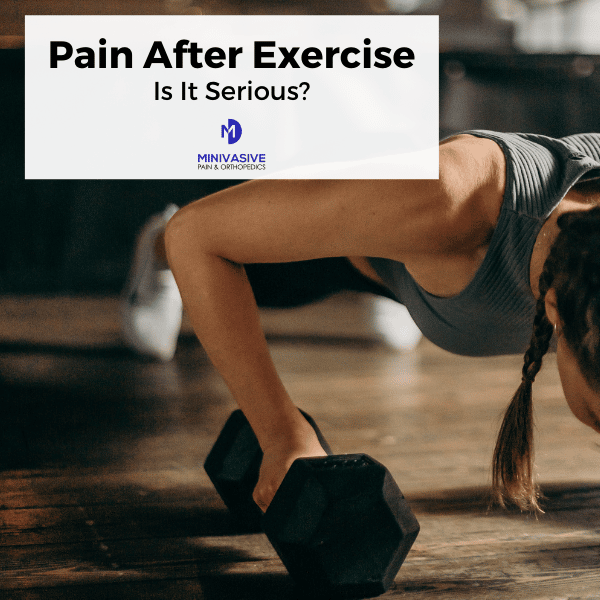With the new year right around the corner, many of us are setting our goals and resolutions for the fresh start to come. These resolutions often include new exercise plans and fitness goals. While exercise is an incredibly important component to a healthy lifestyle, what happens if you’re experiencing pain during or after exercise? Below we walk through how to tell if your pain after movement is a problem or not.
Pain v. Soreness: What’s the Difference and Is it from Exercise?
While exercise has a number of benefits, including promoting healthy bones and muscles, improving sleep, managing stress and more, you can also expect some discomfort from pushing your body more than you’re used to. But how can you tell if the discomfort you’re feeling is soreness from exercise or pain from something else entirely?
Muscle Soreness
Muscle Soreness is typically caused by using muscles that you haven’t in a long time. During exercise, your muscles experience unharmful and small tears that your body eventually fixes. Once your body repairs the tears, your muscles are stronger. Short-term muscle fatigue or soreness such as this is completely normal, and should disappear on its own after a few days.
The amount and intensity of your muscle soreness will vary, depending on the intensity and length of your workout. If you participate in an activity you’ve never done before or haven’t done in years (like swimming or biking), your soreness may last a bit longer as your body adapts.
Coping with Muscle Soreness
While recovering from muscle soreness caused by physical activity, keep the following tips in mind.
Pain
Typically, pain caused by an injury is isolated to one body part or area. Pain is also often more intense and constant than muscle soreness as well. It can keep you awake at night, and intensify upon movement. Your joints or muscles can become stiff, and it can be hard to do all the things you need to in order to stay active. Pain also changes how you move. If you notice that you’re limping or favoring one shoulder over another, you may be experiencing an injury.
Coping With and Managing Your Pain
If you’re experiencing pain after exercise, consider the following tips:
Chronic Pain Houston: Minivasive Pain and Orthopedics
At Minivasive Pain, we have a dedicated staff of pain management specialists. It is our mission to treat the causes of your pain with both the highest standards of care and quality. With several pain management centers throughout the Houston area, caring for your pain is what we do every day. To learn more, or to schedule an appointment, visit https://minivasivepain.com/contact-us/ or call us at (346) 800-6001.

